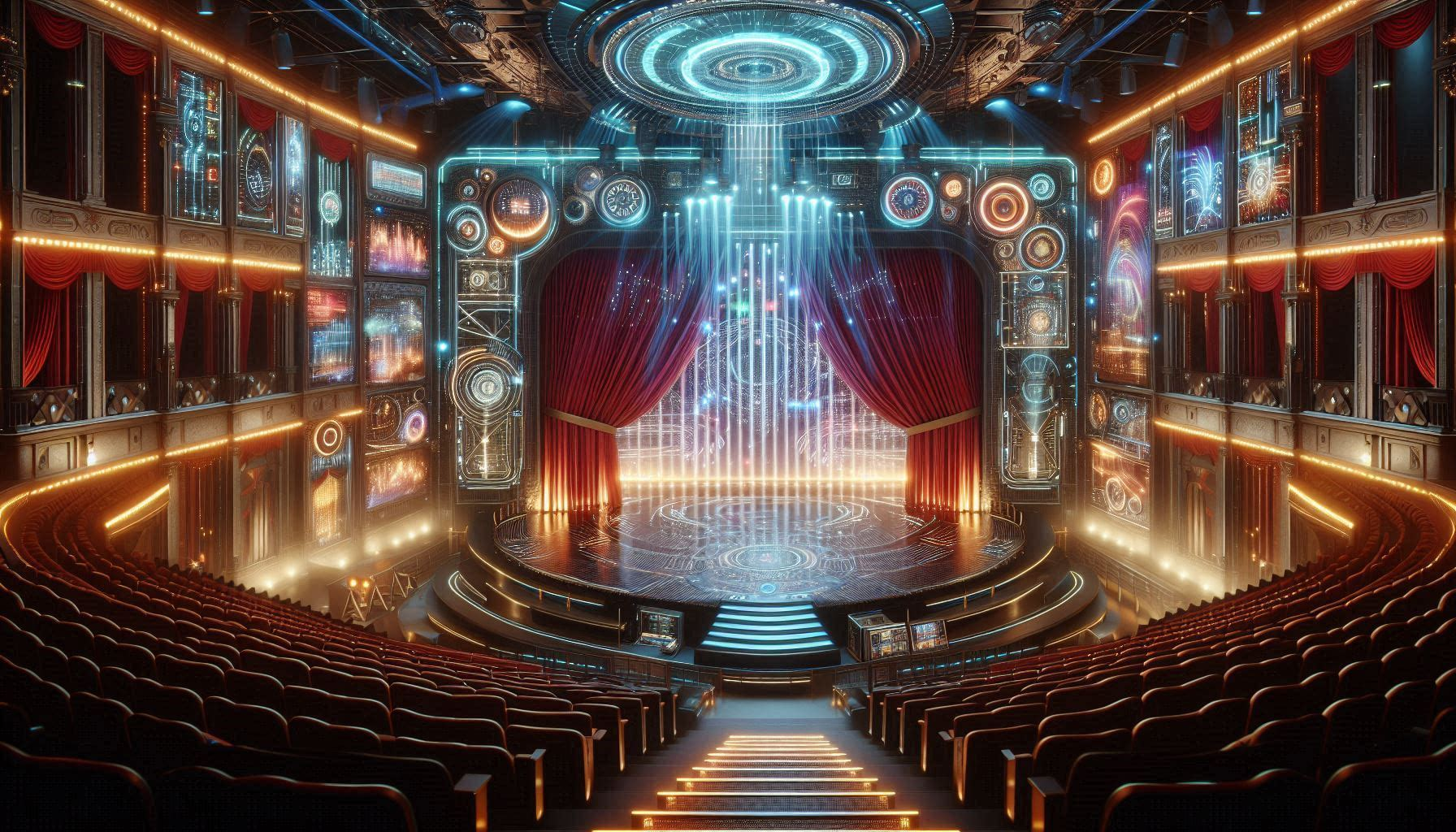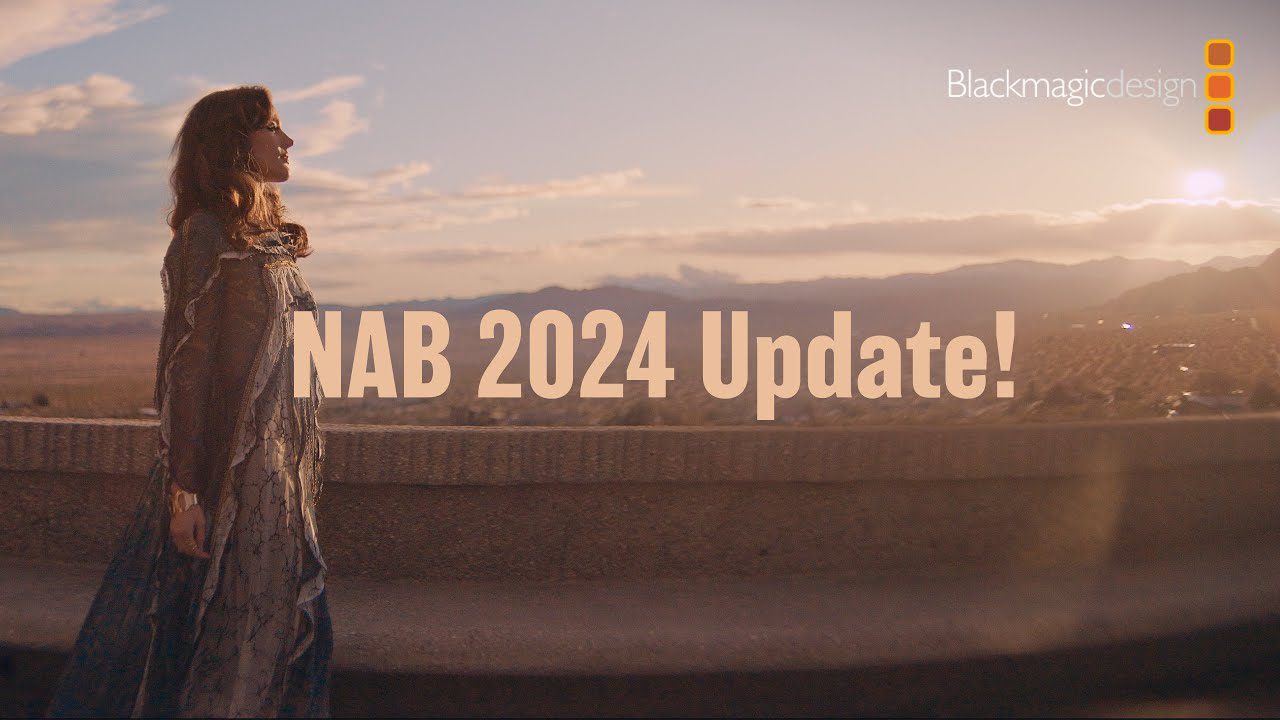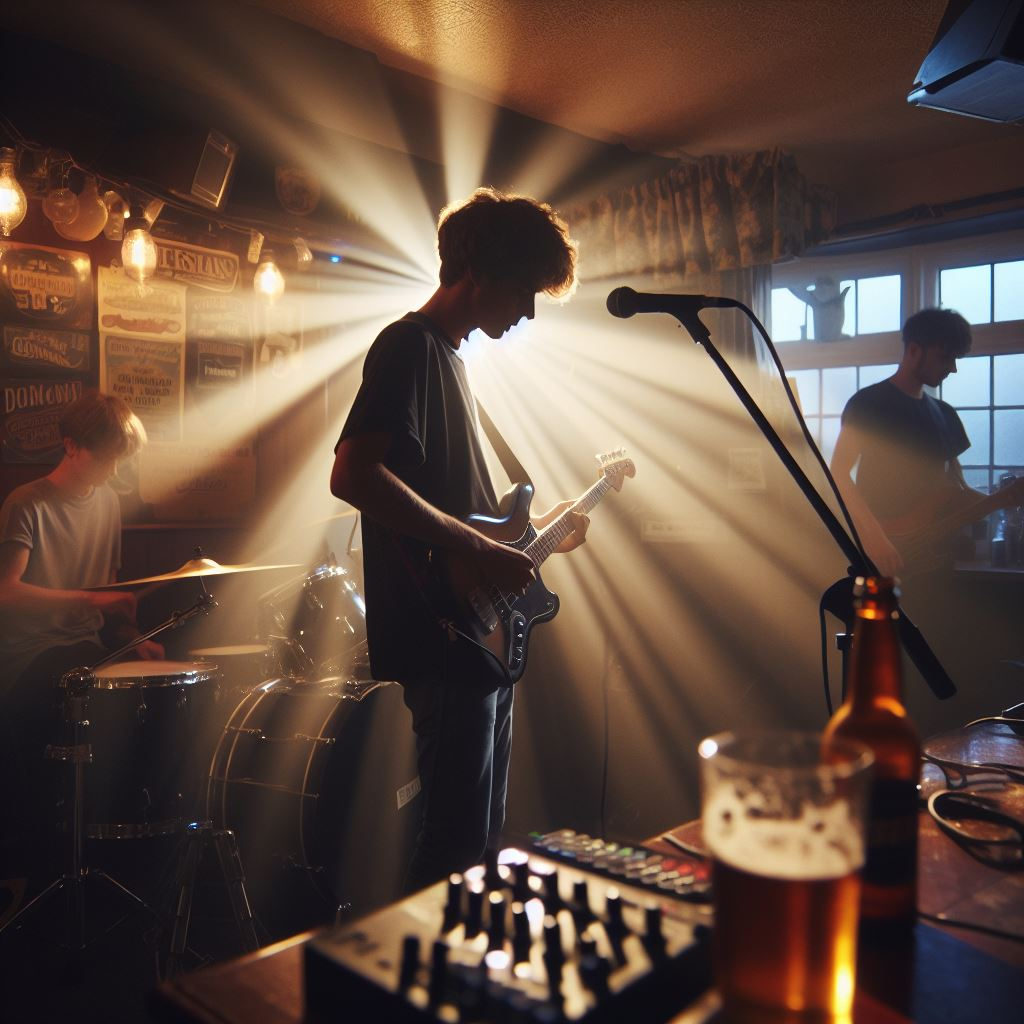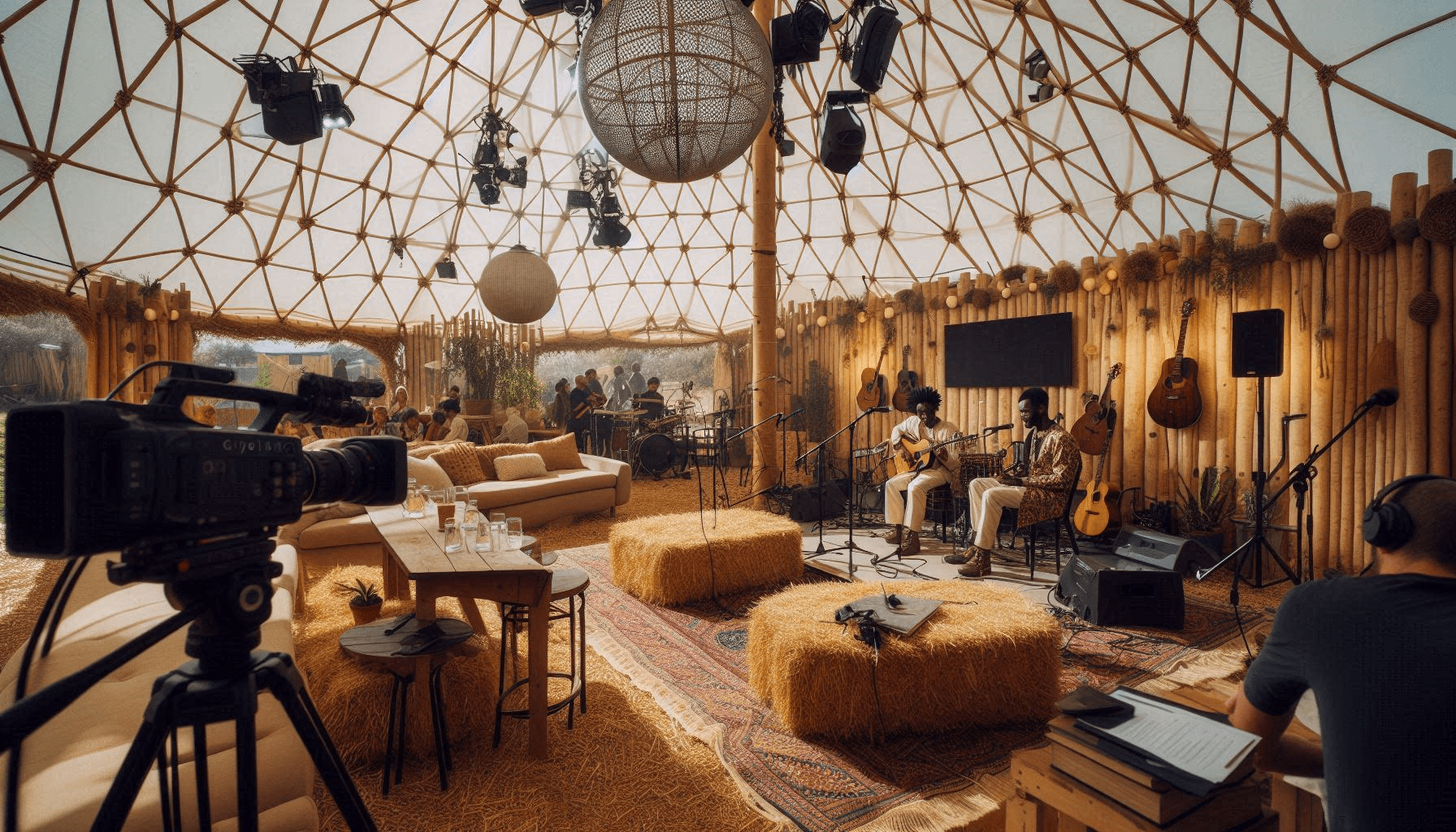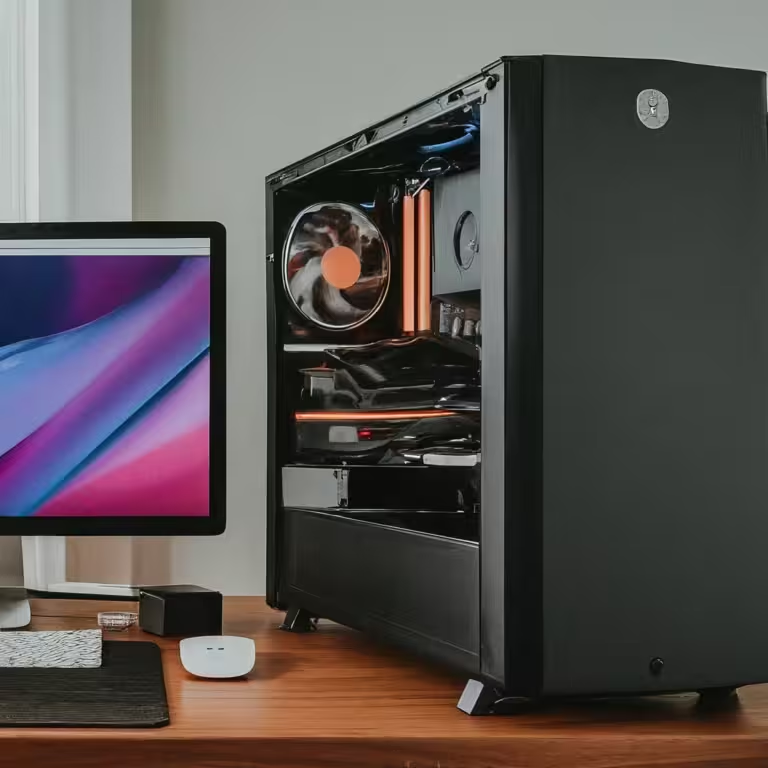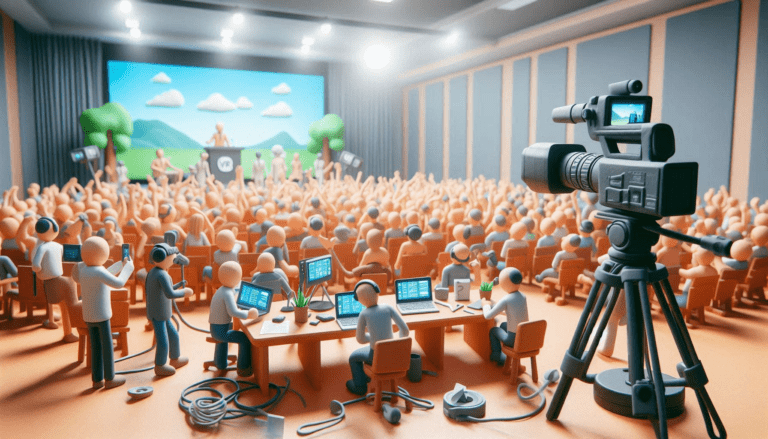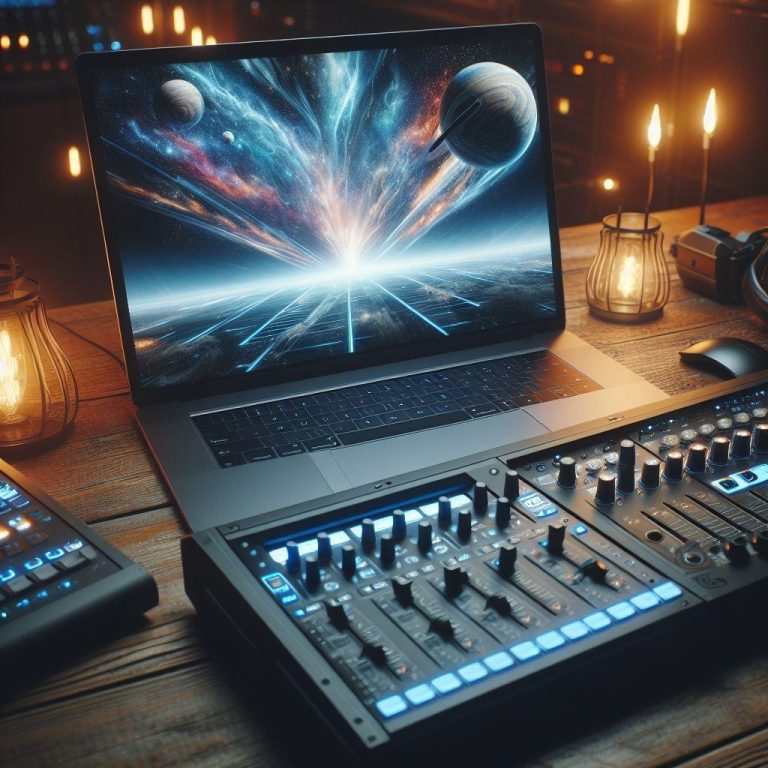No Budget Theatre lighting Rig
It’s been a few years but one thought still pop in my head from time to time. What upgrades would I make to my old theatre if I had an unlimited budget. Not very useful in real life but a nice fun thought exercise.
As this is kind of my ultimate Theatre Lighting Rig I’m going to include it as part of my Rigging for events series. You can check out some of my other posts in the series below.
I’ve had the pleasure of working in theatres all over the UK, but none have captured my heart quite like The Spa Theatre in Bridlington. This charming, intimate gem opened its doors in 1911 and is perfectly perched on the south promenade, offering stunning views of the harbour. With its cosy 675 seats, this ornate Edwardian two-tier venue feels like a warm embrace, making every performance—from music and comedy to theatre and touring shows—a truly special experience.
When The Spa got its fabulous makeover in 2006, it was a complete transformation! They took it right back to the bare bricks and rebuilt it from the ground up. The structure was reinforced, and the backstage areas got a sleek, modern upgrade. We’re talking revamped dressing rooms, state-of-the-art lighting, sound, and AV systems. Plus, they installed a fully automated flying system that can be operated by just one person at stage level. Talk about a high-tech facelift!
While the aging fixtures got a much-needed upgrade, working with a council budget meant we had to make do with some single-purpose generic fixtures and a few recycled Martin Mac 250s and the occasional Mac 300 that had a mind of their own. I often daydreamed about what magic I could create with an unlimited budget—or even just a decent one for lighting! So, that’s the plan for today, If I had an unlimited budget to upgrade the old theatre what would I do?
I’m still sticking to my Theory of (Lighting) Everything, but now I’m all about using intelligent fixtures, moving lights, and LED walls instead of those old generic conventional fixtures. The great thing is, these new fixtures have the same characteristics but need fewer units to cover the same area. Plus, we get some awesome extra benefits, like fixtures that can move and create dynamic effects. It’s like upgrading from a flip phone to a smartphone—so much more you can do!
The Venue
While the venue got a fantastic upgrade in 2006, I have some ideas to take it even further. For instance, the current flying system uses one motor per fly line, which is great in theory. But wouldn’t it be awesome if we could remove a bar entirely and hang something from a single motor that can be controlled separately? Imagine having three individual motors for each bar—they could be paired up when you need a truss for lights or drapes, but also used individually for some creative effects or special setups for set pieces. I’d still keep the motors controllable, but I’d run them from a dedicated console or the lighting desk via ArtNet or DMX. Talk about next-level flexibility!
The next big change I’d make is swapping out the large Dimmer room on the flying floor for Power Distribution. It might sound similar, but instead of having dimmable channels across the rig, everything would be fixed power with just two states: on and off. We’d replace those multiple racks of dimmers with a basic commercial Distribution Board, sending 3 or 4 power lines to each lighting truss and plenty more to various stage areas like floor boxes and wall panels. Since none of the fixtures I’ll be using need dimming, this setup offers greater flexibility and cuts costs—because let’s face it, dimmer racks aren’t cheap!
Another exciting upgrade I’d make is installing a dedicated network rack in the theatre, with network runs snaking around the stage, lighting truss, control room, follow spots, and dressing rooms. With more event technology relying on network connections for lighting, sound, AV, and communications, this setup would simplify wiring for shows and offer greater freedom in equipment placement.
The network upgrade also includes my final change… well, at least until we tackle the actual lighting! This involves moving everything we possibly can to their own dedicated networks. Picture this: lighting on an ArtNet network that doesn’t interact with anything else, sound on its own Dante network, and multiple point-to-point network runs for video using 2110IP. Imagine being able to send video feeds throughout the venue, including to the dressing rooms, and having multiple control points for lighting, sound, and video using these protocols. It’s like giving the theatre a high-tech superpower!
I’m planning to dive into a full Dante audio setup for theatre spaces in an upcoming post. I just need to do a bit of research first, as I’m not exactly a sound tech wizard yet—I can play some audio and set levels, but that’s about it for now. Hopefully, I’ll level up my skills soon! I’ve also written a post about the Blackmagic 2120IP range released at NAB 2024, if you’re curious about my thoughts on that. This might be something I explore more in the future. Stay tuned!
Lighting
For now, I’m focusing on the lighting. As I mentioned earlier, I’m ditching all the conventional fixtures at the venue. Don’t get me wrong, they can be super handy, but this post is all about having an unlimited budget! So, I’ll be replacing them with intelligent fixtures of various kinds—though not all will be moving heads. While researching for my post about using LED fixtures in theatre, I discovered Robe’s range of LED fixtures. I’m a huge fan of Robe’s lighting products, but they can be pretty pricey when upgrading a theatre on a budget. From what I found in other countries and converted to GBP, it’s clear that cost is a concern—especially since there’s only one distributor in the UK and their website doesn’t list prices. Luckily, we don’t have that worry this time around, and most of the rig will likely be supplied by them.
Front of House
The back of Front of House
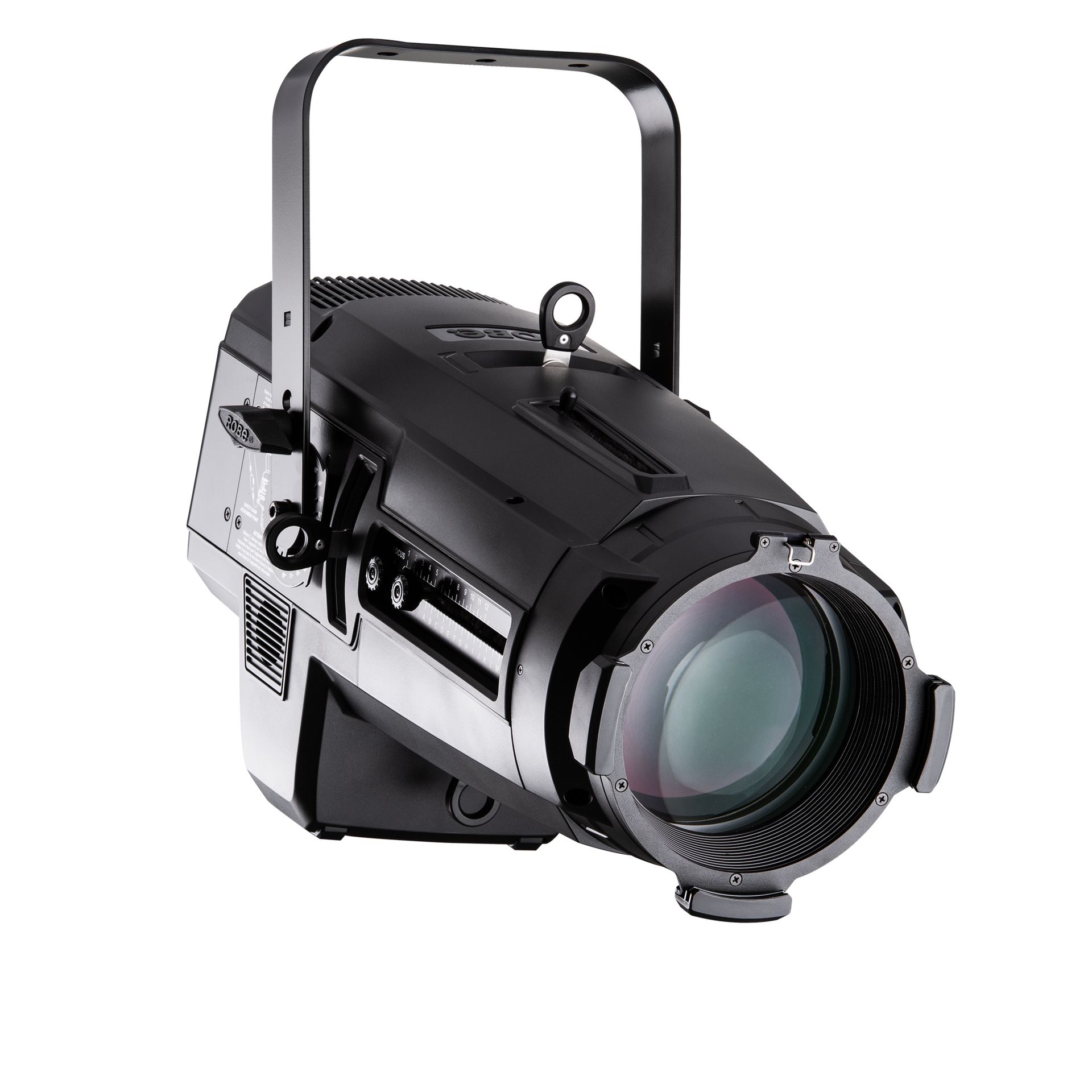
Let’s kick things off at the back of the venue. Last time I worked in the theatre, there were two small 3-channel Internally Wired Bars (IWs) on the ceiling at the back of the circle, right in front of the follow spot booths. These bars held three ETC Source 4 Profiles with 5-degree lenses, perfect for adding a bit of extra oomph to the front wash and ensuring those in the Circle don’t just see shadows on the actors’ faces. Now, I’ll be upgrading these to the Robe T11 Profile. These beauties come with a built-in manual 5-50 degree zoom lens and produce a dazzling 12,000-lumen beam with a CRI rating of 95+. Plus, they feature Robe’s Cpulse Flicker-Free management, so HD and UHD cameras won’t have any issues with the light source. They also boast manual framing shutters, built-in frost, and gobos, with optional drop-in motorized iris, static gobo holder, and rotating gobo holder. The T11 also have CMY/RGB or RGBAL colour mixing built in.
Follow Spots
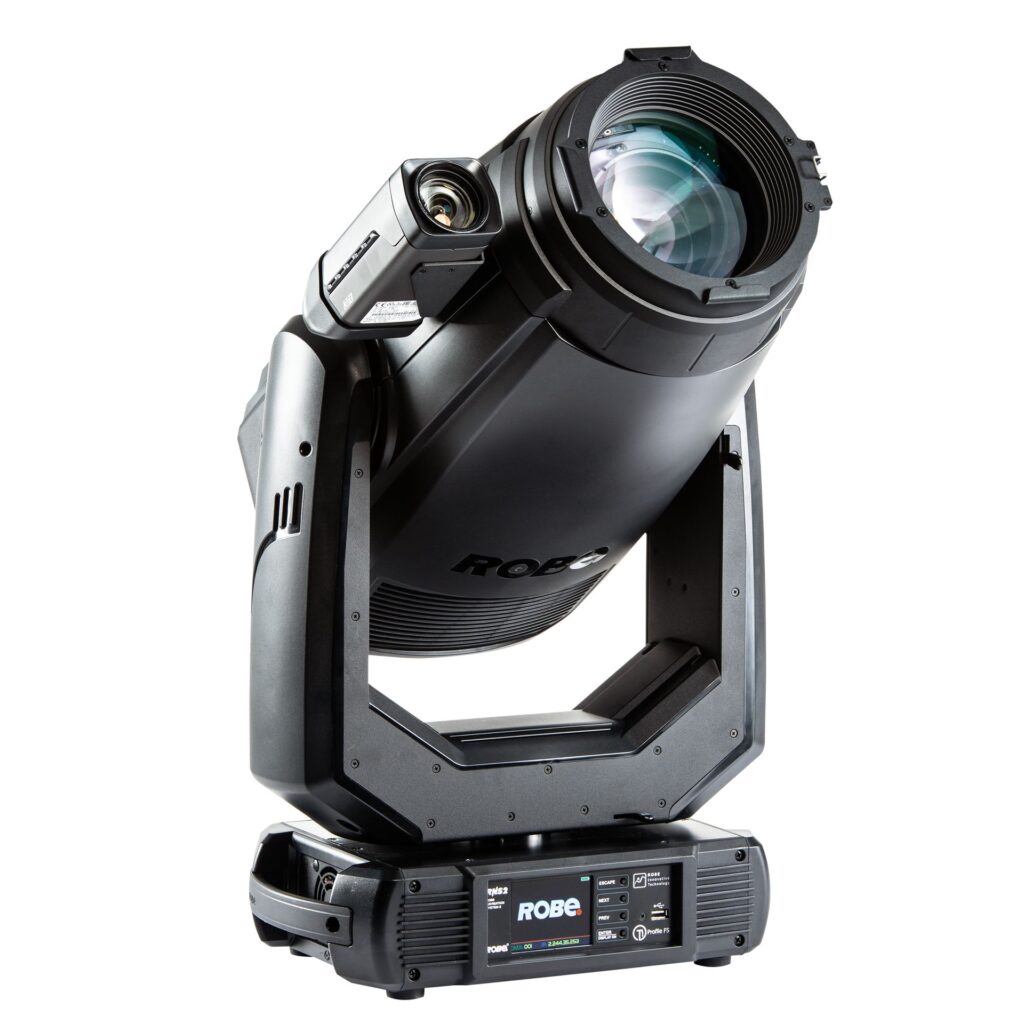
Next up, it’s time to upgrade the follow spots, and once again, Robe has us covered! Their T1 Profile FS can be connected to the innovative Robospot system, allowing follow spot operators to be situated anywhere in the venue and control up to 12 fixtures each. Not that I’ll make our ops handle that many, but it’s great to have the option to control multiple fixtures on one performer. We’ll be removing the old follow spots, freeing up space in the follow spot booths, and fitting two T1 Profiles FS in there for more creative freedom. These fixtures produce a brilliant 12,600 lumens and, like the T11, have a CRI rating of 95+ with Robe’s Cpulse Technology built in. The T1 Profile FS boasts a zoom range of 7 to 49 degrees and features a rotating gobo wheel, animation wheel, framing shutters, 6-facet rotating prism, and CMY/RGB or RGBAL colour mixing.
The Front of the Circle
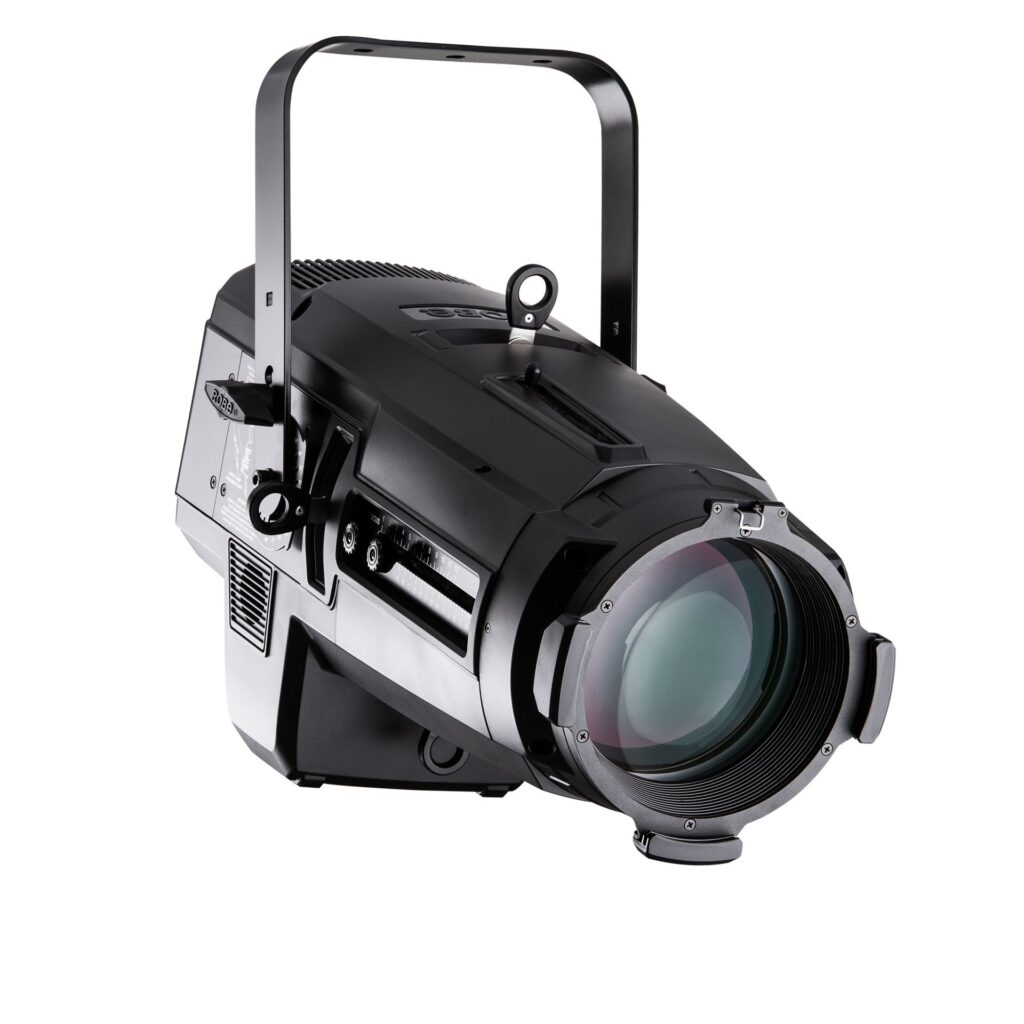
Like most venues with a circle (or balcony), the designer of The Spa took the opportunity to install another Internally Wired Bar (IWB) at the front of the circle. This IWB has six power channels ready for action. Just like the back-of-house bars, this one is equipped with six Source 4 Profiles, providing a direct front wash to the stage—except for one, which has a gobo for the curtain warmers. And just like the bars at the back of the house, we’ll be upgrading these to the Robe T11 Profiles.
The Side of the Front of House

The Spa Theatre’s front-of-house lighting setup is pretty unique. Instead of having a truss or bar flown in from the ceiling parallel to the stage (thanks to the listed status of certain elements), it features gantries on either side of the front of house, right up against the stage. There’s no fixed access, so refocusing a fixture was a real pain and getting an accurate focus could be tricky due to the angles involved. Each gantry housed 10 ETC Source Fours, providing four washes (Open White, Cyan, Magenta, and Yellow) plus two specials, with an additional two power sockets on the IWB. Talk about a creative workaround!
I’ll be swapping out the 10 ETC Source Fours for 4 Robe T1 Profiles. The main difference from the FS version is that these don’t have a camera attached, but they can still be used with the Robospot system. I’ve chosen 4 fixtures so we can have 2 on each side to provide a wash (which can be easily refocused if needed), while the remaining two can be used for specials either on the stage or over the audience.
The Stage
Washes & Specials

No show would be complete without a solid wash or four, but with our unlimited budget, it’s time to take things up a notch and free up some space on the rig. I could stick with the Fresnel variety on the T11 Profile I used for the front-of-house replacements, but why not go for something a bit extra? So, instead of T11 Fresnels, I’ll be opting for Robe T1 Profiles. You might wonder why I don’t use the spot or wash variants. Well, the profiles offer a few extra features and can easily handle the jobs of both spots and washes. The extra cost is totally worth it in my book.
I’ll be replacing the 12 Fresnels on each of the 4 lighting bars used for the wash with 6 T1 Profiles. This setup gives me two fully controllable washes, and the fixtures can also be used as specials or for effects. For example, 3 fixtures on each bar could provide a coloured wash, while the other three can splash a breakup wash over the top.
CYC & Footlights

From what I remember, the Spa Theatre had two options for the Cyc: a Star Cloth and a White Cyc. I’ll be replacing the Star Cloth entirely with a massive LED screen (more on that later), so we only need to worry about lighting the White Cyc. Robe has us covered here with the T32 Cyc. This fixture features 16x 40W MSL™ RGBBAL LEDs, offering full CMY/RGB or RGBAL colour mixing in four individually controllable zones. It has an asymmetrical field angle of 85° x 45° and Robe’s Opti-6 system, which delivers a 6:1 height-to-distance ratio. I’ll be placing these across both the top and bottom of the Cyc to ensure even coverage.
One thing I always felt was missing from the Spa Theatre stage was footlights at the front. In other venues, I’ve used them to great effect, especially for ballet and those creepy scenes in plays and gigs. But fear not, because Robe comes to the rescue with their FOOTSIE2! This fixture packs 48 RGBW/TW/WW LEDs in a single chip, outputting a brilliant 4,940 lumens with a CRI of 90+. These will be a fantastic addition to achieve that dramatic up lighting from the front of the stage.
Parcans
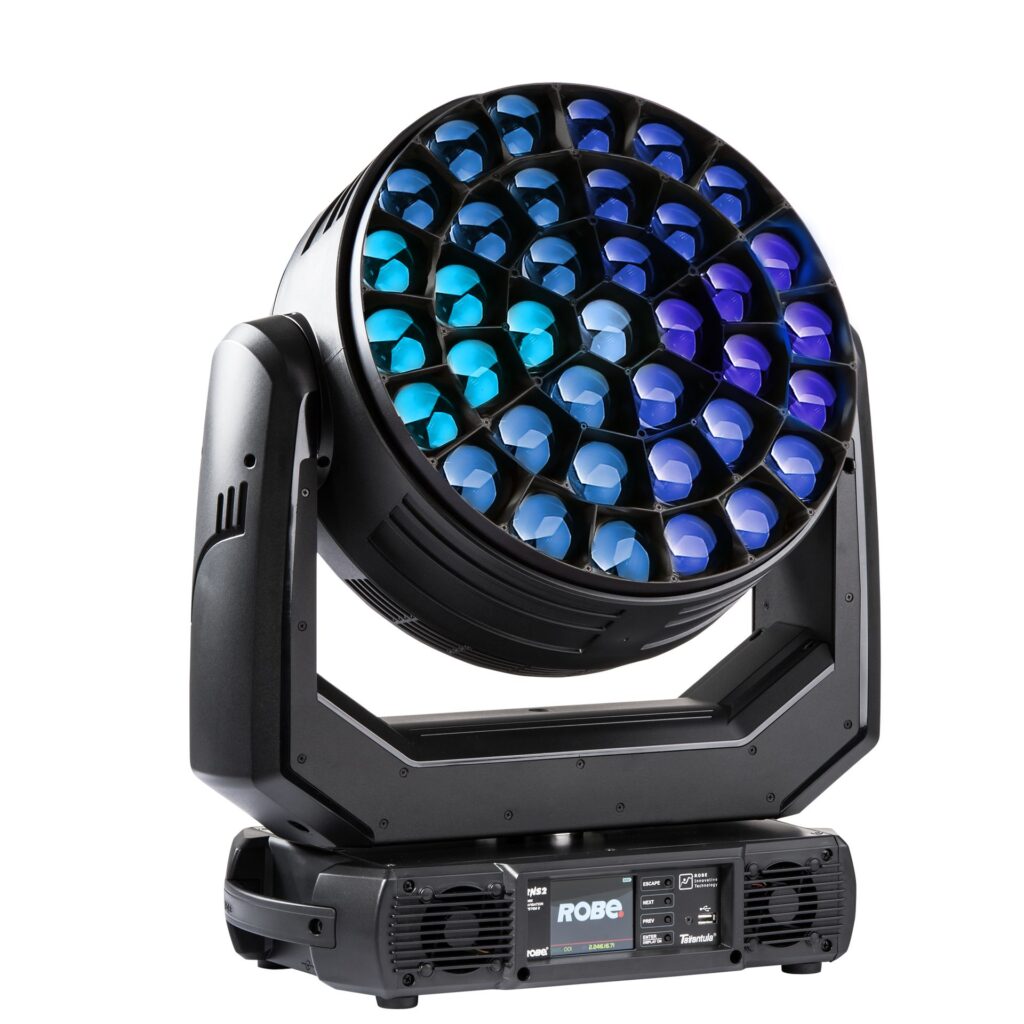
Where would we be as an industry without the trusty parcan? It’s been a staple for years and still packs a punch. But let’s face it, they’re not very energy-efficient and take up a lot of space if you want multiple colours. For this upgrade, I’m going with the Robe Tarrantula moving LED Wash light. This fixture features 1x 60W and 36x 40W individually controllable RGBW LED multichips, delivering a whopping 25,200 lumens, a zoom range of 4-50 degrees, and a variety of built-in effects
I love grouping Parcans in sets of 5 to create fantastic fan effects across the stage, and I’ll be doing the same with these Tarrantula fixtures. Since we usually had a spare truss or two above the stage (even during Panto, shock horror), I plan on utilizing these and setting up three of these fan configurations on each.
Upright Truss
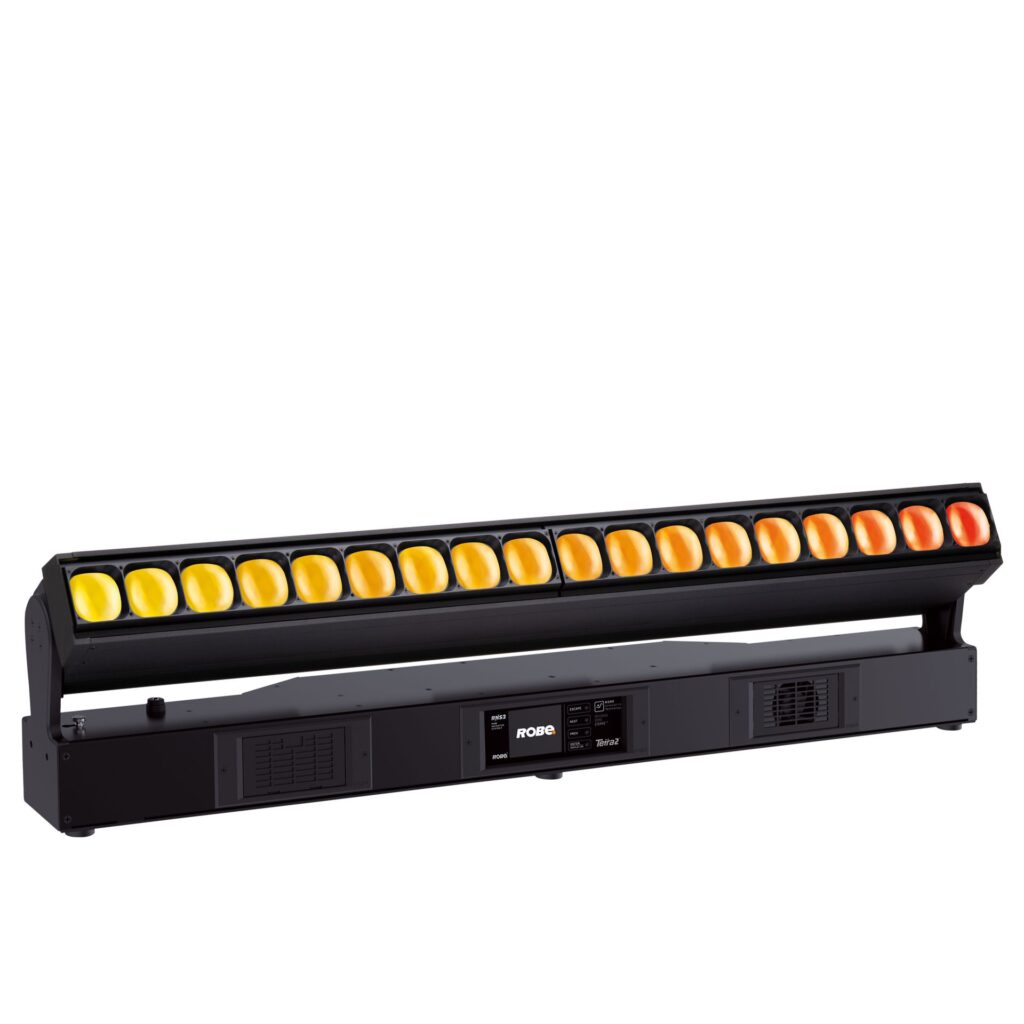
There used to be an upright truss box section on either side of the stage in the centre position for hanging any spare lights or specials needed for shows. With this upgrade plan, I’m going to increase that to three on each side behind each set of legs. I’ll be replacing the spare lights (usually Par 20s) with Robe Tetra2s, which will go up one leg of the truss facing the stage, and pairing them with 4 T11 Profiles for fixed specials.
The Tetra2s feature 18x 40W RGBW LED multichips, outputting 10,500 lumens, with a zoom range of 4-45 degrees and multiple effects options. They can also rotate by 191 degrees, adding some dynamic movement to the side lights. The number of specials might seem like overkill, but they come in handy for showing the passage of time by changing the angle and colour of the fake sun on set. Plus, they can add a punchy light effect during gigs.
LED Walls

Over the years, I’ve had the pleasure of working on a variety of concerts, and there’s one thing that always steals the show (besides The Prodigy, of course): the LED wall. From the moment I first used one, I was hooked. I believe LED walls should be a staple in every stage setup, whether they’re replacing the Cyc, the legs and headers, or even creating special effects like a haunted mirror in a panto. Now, I’m excited to bring some of these ideas to life.
First up, we’re going to build a massive LED wall across the back of the stage. But why stop there? Let’s replace the legs and headers with LED panels too. The only thing I wouldn’t swap out are the red curtains and header at the front—they add a touch of class to any production (or maybe I’m just a bit biased).
To make this vision a reality, we’ll need two main things: LED panels and a video processor. And yes, we’ll need cables too—it’s theatre, after all! After scouring the internet and steering clear of any dubious deals on eBay or AliExpress, I found some promising options: REM 1 panels by Chauvet Pro paired with the Novastar MX40 Pro sender. I’m not entirely sure how many we’ll need, but based on the reviews, these seem like solid choices. I’ll need to do a bit more research on setting them up and how many panels each controller could control, but that’s a topic for another post!
Eye Candy
When it comes to concerts and shows, I love adding a few extra fixtures to make the stage truly pop! I used to rely on floor cans for that perfect up-lit look, but now, with a bigger budget, I can go all out with some extra Robe Tarrantulas as part of the ground package. And guess what? Robe has even more goodies to offer!
PATT 2017
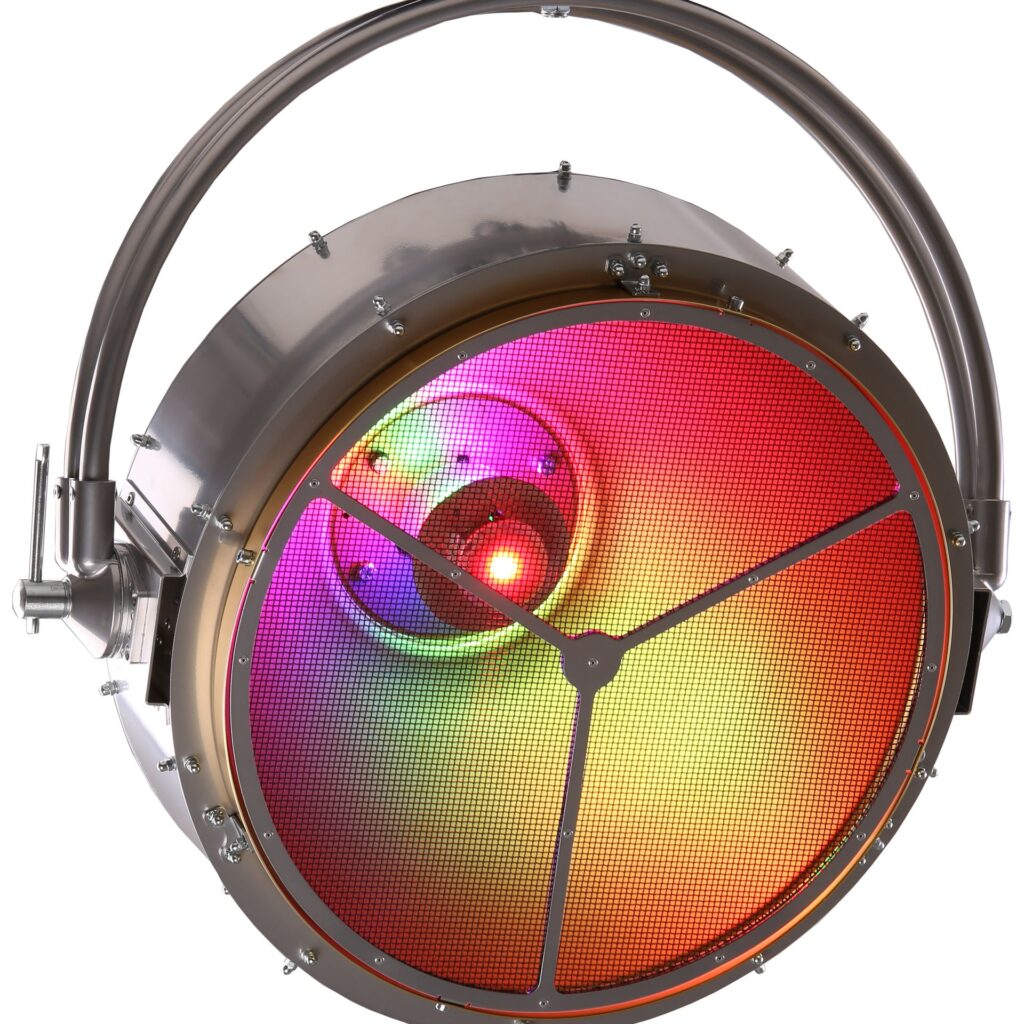
Inspired by lighting designer Tim Routledge, the Patt 2017 is a showstopper! With 7x40W RGBW LEDs, it lights up its sleek, spun aluminum body, making it look as stunning as the performers on stage. You can control the entire LED cluster as one unit or each LED individually, creating smooth animations, transitions, and rainbow effects on its special gold-brown coated reflector. Plus, it has a remote power and data box (PATT Driver) connected through standard color scroller cables with 4-pin XLR connectors. And the best part? You can connect or disconnect it from the PATT Driver even when it’s powered on!
I absolutely adore how the Patt 2017 combines the charm of classic fixtures with the modern twist of fully controllable color-changing LEDs.
pixelPATT
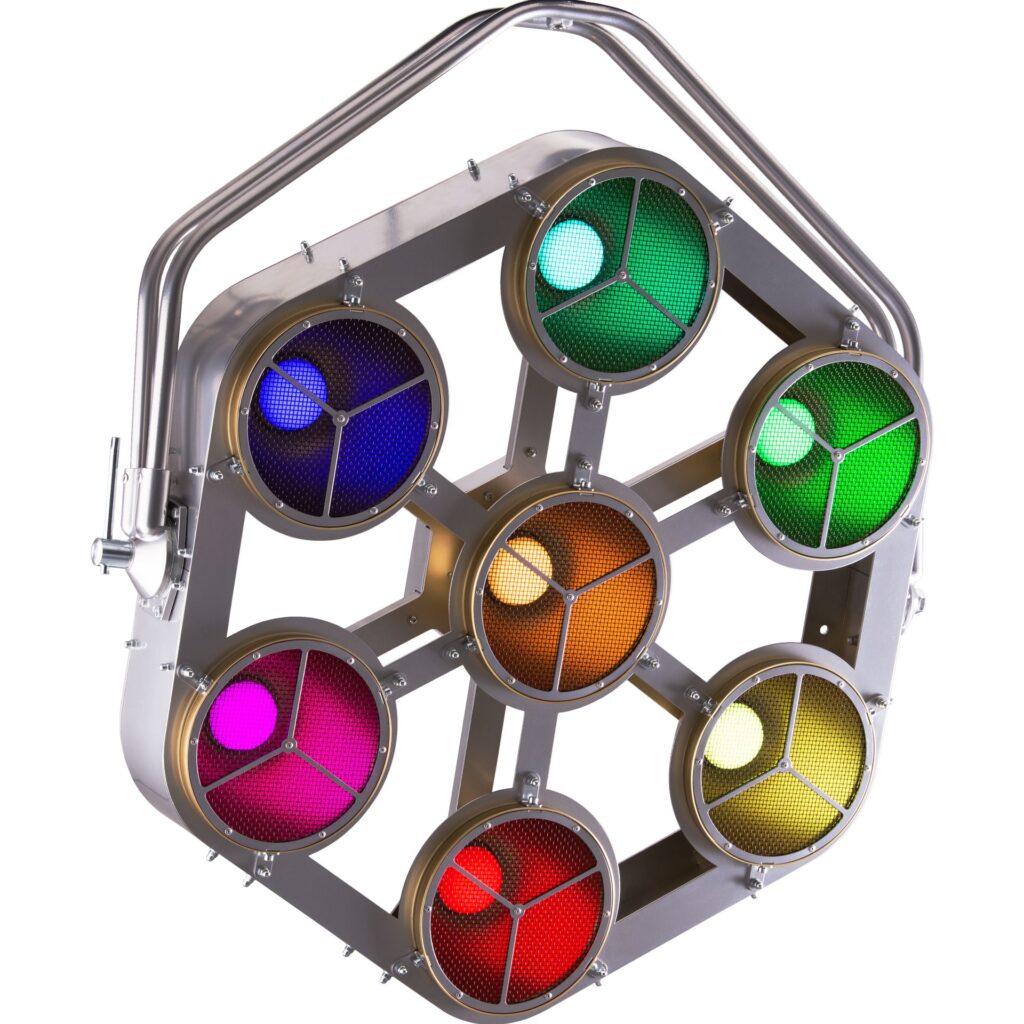
The pixelPATT is another gem, featuring 7x 40W RGBW LED multi-chips—one in the center surrounded by a ring of six. It’s housed in a super-slim, lightweight brushed metal frame, maintaining the attractive curves of the PATT 2013 and picklePATT. This makes it not only a fantastic light source but also a visually appealing piece. Like the Patt 2017, it has a remote Power and Data box (PATT Driver) connected through industry-standard color scroller cables with 4-pin XLR connectors. Installation is a breeze, as you can connect or disconnect it from the PATT Driver under power.
I love how the pixelPATT looks like a blend of a blinder and some of the older Patt fixtures. It’s a brilliant way to add a touch of audience light during concerts
Enhancing the Stage with Perfect Haze!
Now that we’ve got our fixtures sorted, it’s time to make those beams truly shine! Back at the Spa Theatre, we had to share one hazer and a smoke machine between the theatre and the Royal Hall. But this time, we’re going all out with dedicated hardware for the theatre, and we’re stepping up our game with the Robe X1 FT Pro.
Robe X1 FT Pro
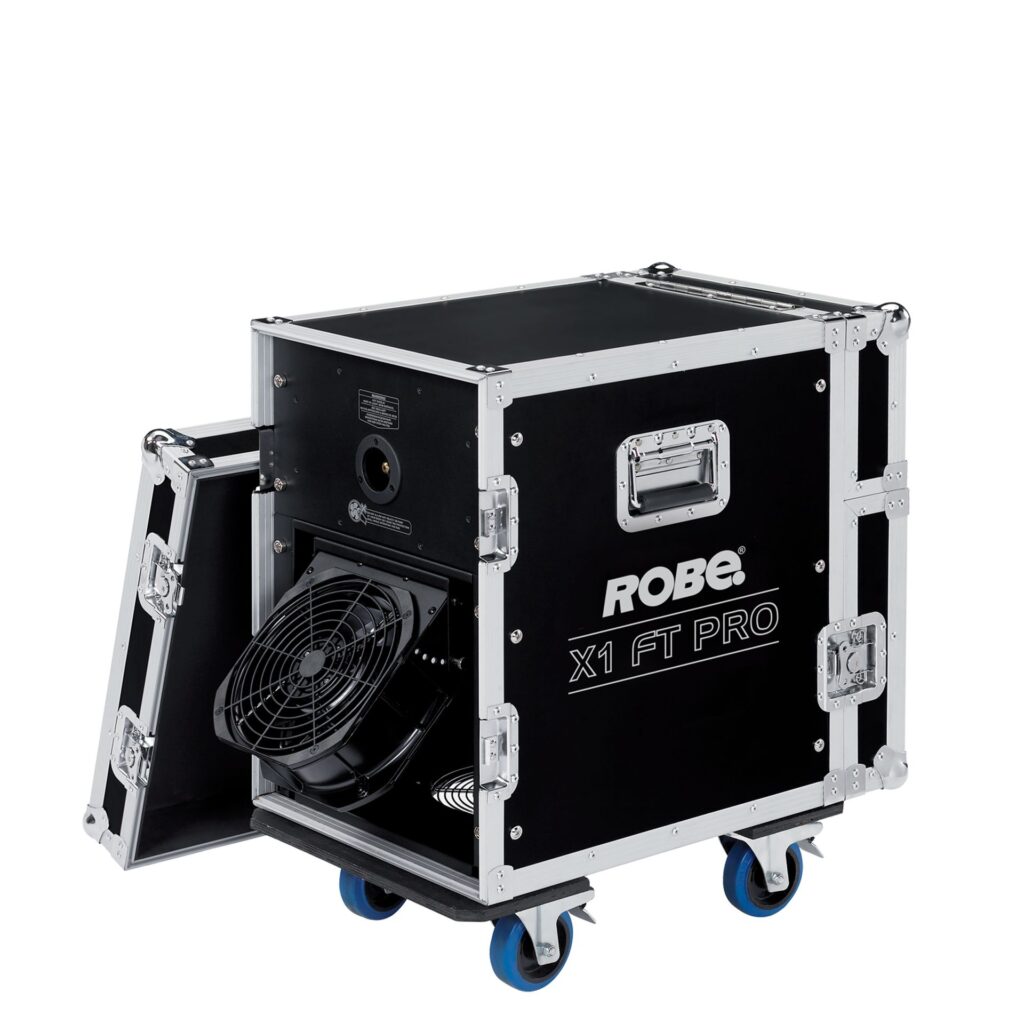
The Robe X1 FT Pro is a game-changer! This versatile machine can quickly produce either strong, powerful fog or a smooth, even layer of haze. It combines fog and faze operations into one unit, making it perfect for any venue, big or small. Equipped with the latest air pump technology and a liquid solenoid valve-based pump, it features a self-cleaning function that ensures a fine, dry fog. Plus, the built-in adjustable angle fan with speed control lets you easily regulate the fog output power and direction. Its rugged, road-ready case design makes it ideal for touring and transport.
To achieve a perfect, even haze coverage, we’ll place one X1 FT Pro on each side of the stage. This setup will solve the airflow issue we faced at the Spa Theatre, where stage right had great haze coverage but stage left always seemed empty unless we cranked everything up to full blast. With this new setup, we’ll get consistent haze across the entire stage without overdoing it on one side.
Final Thoughts
So, there you have it—my dream, unlimited-budget, Robe-based theatre upgrade for The Spa Theatre in Bridlington! I know it’s a bit of a fantasy, but I’d love the chance to use all this amazing gear for a show or ten. Some might find it odd that I’m sticking exclusively with Robe fixtures, but for me, it’s all about reliability and compatibility. Over the years, I’ve tried various brands, and Robe has consistently been the most dependable.
The only downside? Their UK supplier doesn’t list prices on their website, which makes writing blog posts like this a bit of a hassle without bothering them for quotes on orders that might never happen.
What do you think of my pie-in-the-sky upgrade plans? Should I have considered other manufacturers? Would you swap out any fixtures for something else? And what would you do to upgrade your favorite venue? Let me know in the comments below or on the social post that brought you here!

